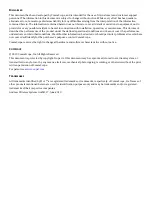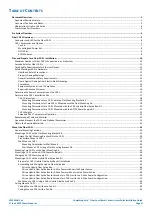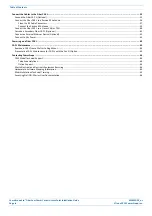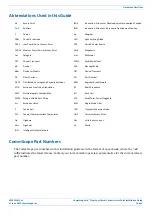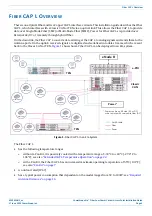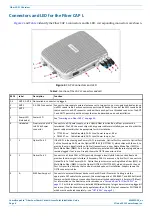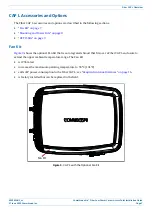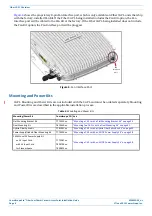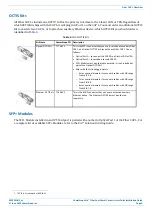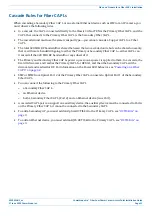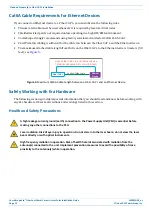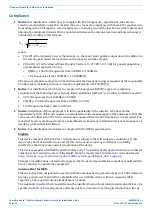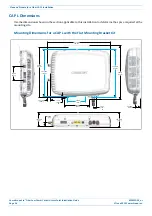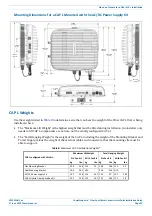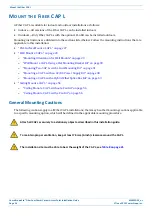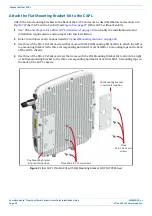
M0201ANC_uc
CommScope Era
™
Fiber Low Power Carrier Access Point Installation Guide
© June 2019 CommScope, Inc.
Page 11
Plan and Prepare for a Fiber CAP L Installation
Cascade Rules for Fiber CAP Ls
When cascading a Secondary Fiber CAP L or an external Ethernet device such as WiFi or an IP camera, you
must observe the following rules.
•
In a cascade, the CAP L connected directly to the Classic CAN or TEN is the Primary Fiber CAP L, and the
CAP L that connects to the Primary Fiber CAP L is the Secondary Fiber CAP L.
•
The cascaded unit must use the same transport type—you cannot cascade a Copper CAP L to a Fiber
CAP L.
•
The total 320 MHz RF bandwidth is shared between the two cascaded units, but can be shared unevenly;
that is, with more bandwidth going to either the Primary or Secondary Fiber CAP L—either CAP L can
transmit all the 320 MHz RF bandwidth or any subset of it.
•
The Primary and Secondary Fiber CAP Ls power up as soon as power is applied to them. In a cascade, the
Era GUI discovers and readies the Primary CAP L for RF first, and then the Secondary CAP L will be
discovered and readied for RF. For information on the Power LED behavior, see
.
•
SMF or MMF from Optical Port 2 of the Primary Fiber CAP L connects to Optical Port 1 of the Secondary
Fiber CAP L.
•
You can connect the following to the Primary Fiber CAP L
–
a Secondary Fiber CAP L
–
an Ethernet device
–
both a Secondary Fiber CAP L (Port 2) and an Ethernet device (Aux Port).
•
A cascaded CAP L pair can support one auxiliary device; the auxiliary device must be connected to Port A
on the Primary Fiber CAP L, it cannot be connected to the Secondary CAP L.
•
To add a Secondary AP, you must add an Optical OCTIS kit to the Primary CAP L, see
•
To add an Ethernet device, you must add an RJ45 OCTIS kit to the Primary CAP L, see


